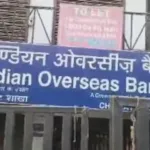
In 2024, India saw a 56% increase in the daily number of electronic transactions for accessing public services compared to the previous year. During the financial year 2023-24, Rs 6.9 lakh crore was transferred through Direct Benefit Transfers (DBT) under 314 government schemes, benefiting 176 crore individuals. These digital transfers have significantly streamlined the distribution of public services.
Cost Savings from Direct Benefit Transfers
DBTs have helped the government save an estimated Rs 3.5 lakh crore in costs by March 2023. This efficiency comes from the elimination of intermediaries and the reduction of fraud, ensuring that welfare benefits reach the intended recipients directly in their bank accounts.
India’s Digital Position and Growth Opportunities
RBI Deputy Governor Michael Patra highlighted that India is uniquely positioned to capitalize on its growing digital infrastructure, vibrant IT sector, and large, young, tech-savvy population. This includes one of the largest AI talent pools, which is expected to contribute significantly to India’s GDP. Forecasts predict that AI could add $359 billion to $438 billion to India’s GDP by 2029-30.
AI Integration in Indian Firms
In 2024, the integration of AI into Indian businesses has grown significantly, from 8% in 2023 to 25% in 2024. This shift towards AI-driven production processes is set to boost productivity and foster new growth opportunities across various industries.
Investment in Semiconductor Industry
India has committed Rs 1.25 trillion to the development of its semiconductor industry. This investment is crucial for supporting the technological needs of the future, including AI and digital infrastructure.
Digital Economy Growth and Financial Inclusion
India’s digital economy currently accounts for 10% of the GDP and is expected to make up 20% by 2026. Digital public goods like Aadhaar, UPI, and eKYC are expanding financial inclusion, making banking and government services more accessible to millions of people across the country.
Productivity Gains Through Digitalization in Banking
Digitalization has led to significant productivity gains in the banking sector. Banks have saved 14,500 person-days per month, reduced customer acquisition costs by 25-30%, and decreased paper usage by 84 tons. Digital banking has also reduced the need for customers to travel, saving four lakh litres of fuel.
Impact of Aadhaar on KYC Costs
Aadhaar, India’s unique identification system, has drastically reduced the cost of conducting Know Your Customer (KYC) processes. It has simplified identity verification, saving time and reducing paperwork for both banks and customers.
Challenges of New Technologies
While digitalization brings numerous benefits, it also comes with challenges. These include disruptions in traditional industries, high resource demands for technology development, and potential cybersecurity risks. Ethical concerns such as privacy issues and the misuse of data also need to be addressed as India continues its digital transformation.







Ok
300000